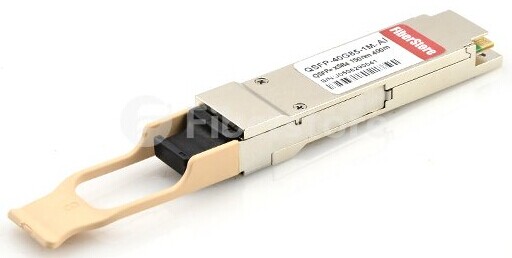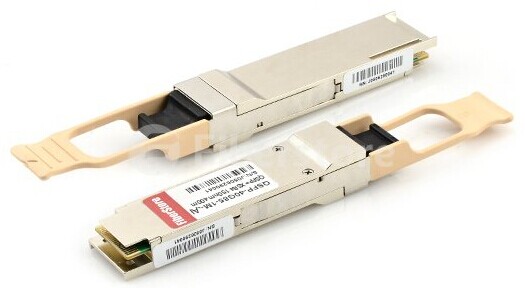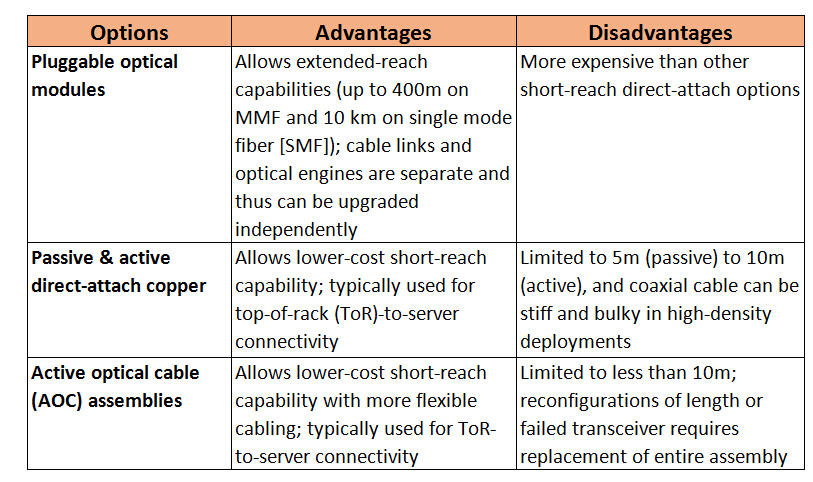Today’s enterprise data centers and networking environments are undergoing an infrastructure transformation, requiring higher speeds, greater scalability, and higher levels of performance and reliability to better meet the demands of business. As speed and performance needs increase, the 40GBASE-SR4 QSFP+ optical transceivers have become an integral part of overall system design. This article will give you a comprehensive introduction to 40GBASE-SR4 QSFP+ optical transceivers.
40GBASE-SR4 is a fiber optic interface for multimode fiber of OM classes 3 and 4 with four parallel OM3 or OM4 fibers in both directions. “S” means short, indicating that it is an interface for short distances. The “R” denotes the type of interface with 64B/66B encoding and the numeral 4 indicates that the transmission is carried out over a ribbon fiber with four multimode fibers in every direction. Each lane has a 10 Gbit/s data rate. The 40GBASE-SR4 QSFP+ transceivers are hot-swappable, low-voltage digital diagnostic Ethernet optical transceivers that support high-speed serial links over multi-mode optical fiber at a signaling rate of 4×10 Gbps. They comply with QSFP+ mechanical, optical, and electrical specifications (SFF-8436). 40GBASE-SR4 QSFP+ modules usually use a parallel multimode fiber (MMF) link to achieve 40G. It offers 4 independent transmit and receive channels, each capable of 10G operation for an aggregate data rate of 40G over 100 meters of OM3 MMF or 150 meters of OM4 MMF. It primarily enables high-bandwidth 40G optical links over 12-fiber parallel fiber terminated with MPO/MTP multifiber female connectors.
40GBASE-SR transceivers are used in data centers to interconnect two Ethernet switches with 8 fiber parallel multimode fiber OM3/OM4 cables. The QSFP+ transceiver modules can be connected to both copper and optical cables. In the process of transmitting data, the 40GBASE-SR4 QSFP+ transceiver converts parallel electrical input signals into parallel optical signals by a 850nm vertical cavity surface emitting laser (VCSEL) array. All data signals are differential and the data rate can be up to 10 Gbps per channel. For example, Extreme 10319 compatible 40GBASE-SR4 QSFP+ transceiver from Fiberstore operates in 4-lanes at a wavelength of 850nm.
40GBASE-CSR4 QSFP modules extend the reach of the IEEE 40GBASE-SR4 interface to 300 and 400 meters on laser-optimized OM3 and OM4 multimode parallel fiber, respectively. Each 10-gigabit lane of this module is compliant to IEEE 10GBASE-SR specifications. This module can be used for native 40G optical links over 12-fiber parallel cables with MPO/MTP female connectors or in a 4x10G mode with parallel to duplex fiber breakout cables for connectivity to four 10GBASE-SR interfaces. Cisco compatible QSFP-40G-CSR4 transceiver from Fiberstore is optimized to guarantee interoperability over the complete specification range of 10GBASE-SR.
Fiberstore offers a wide range options of brand-compatible 40GBASE-SR4 QSFP+ transceivers. In order to ensure each transceiver with high-compatibility, we have a comprehensive and reliable test assured program for each optics. All these 40GBASE-SR4 QSFP+ transceivers will be tested in the original-brand switches to guarantees the high compatibility.



